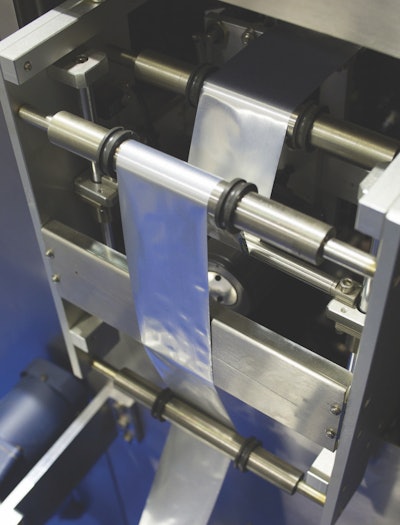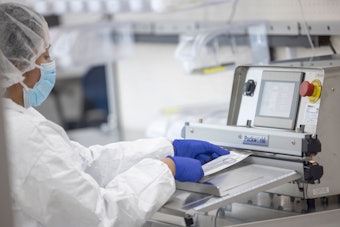In the second quarter of 2021, the global economy surpassed the pre-pandemic GDP from fourth quarter 2019, according to “PMMI State of the Industry US Packaging Machinery Report” by PMMI Business Intelligence. The Asia-Pacific region completed its recovery in late 2020, while the U.S. likely peaked in May 2021. Africa and Middle East regions are expected to follow suit in the third quarter, with Europe and Latin America completing recovery in the fourth quarter.
The global real GDP is expected to increase 6% in 2021 after a contraction of 3.5% in 2020, the strongest advance since 1973. Growth is expected to continue at a pace of 4.6% in 2022, and then settle at 3% between 2023 and 2025.
The report says that the global economy is moving into the ‘sweet spot’ of the current expansion as vaccination rates increase, pandemic-related restrictions are lifted, and consumer spending surges – particularly in the U.S. due to demand for travel and social interaction-related services. Western Europe is in the early stages of a growth spurt as economies reopen, labor market conditions improve, and household saving rates retreat from exceptionally high levels.
Business investment is also picking up in response to more robust sales prospects and favorable financing conditions, and commodity exporting countries are benefiting from elevated prices and a strong resurgence in exports.
The withdrawal of fiscal stimulus will slow growth as governments rein in spending and contend with higher debt burdens. Government fiscal deficits widened from 3% of world GDP in 2019 to 10% in 2020 and are expected to narrow to 7% in 2021 and 4% in 2022.
Forecast Risks
COVID-19 remains a risk to economic outlook in places where vaccination rates are lagging, including emerging and developing countries where vaccine campaigns are just beginning and will extend into 2022. Parts of Asia experienced COVID-19 outbreaks in the spring, prompting lockdowns that affected consumer spending and exports. India, Taiwan, Malaysia, Vietnam, and Japan experienced setbacks in recent months but should rebound as India’s daily infection rate has fallen 80% from its early May peak.
The rebalancing of severely disrupted Global supply chains will take time. In May, supplier delivery times were the longest in survey history, according to the IHS Markit PMI™ global manufacturing survey, contributing to the steepest rise in input costs in over a decade and record inflation in selling prices. While some of the delays emanate from suppliers in Asia, manufacturers in Europe and North America are most affected by delivery delays. And with consumer demand expected to grow at a rapid pace through 2021, transportation delays are likely to continue into 2022. Semiconductor shortages have also disrupted several industrial sectors, including automobiles and parts, household goods, and technology equipment.
Industrial commodity prices are beginning a correction, but downstream price pressures remain intense. High commodity prices are dampening demand and incentivizing production. The IHS Markit Materials Price Index (MPI) has fallen from early May to mid-June, and declines have been broadly based. Buyers are resisting high prices and mainland China has announced plans to sell state inventories of industrial metals. Despite the downturn, the MPI is up 25% year to date and nearly double its year-earlier level. Some of the increases will be passed downstream to finished goods prices in the months ahead.
Global consumer price inflation is projected to pick up from 2.1% in 2020 to 3.3% in 2021 before settling back to 2.7% in 2022 as supply conditions improve and commodity prices retreat. Forecast risks are on the upside and depend on the path of long-term inflation expectations, as well as monetary and fiscal policies.
As economies move toward full employment, transitory inflation pressures could give way to more persistent inflation pressures. In response to accelerating prices, currency depreciation, and capital flight, central banks in Brazil, Russia, Ukraine, and other emerging markets have already raised interest rates. In the United States, the eurozone, and other advanced economies where inflation expectations are well-anchored, monetary tightening can be delayed in the short term but not indefinitely.
Download the FREE Executive Summary below.
Source: PMMI Business Intelligence, “PMMI State of the Industry US Packaging Machinery Report”























